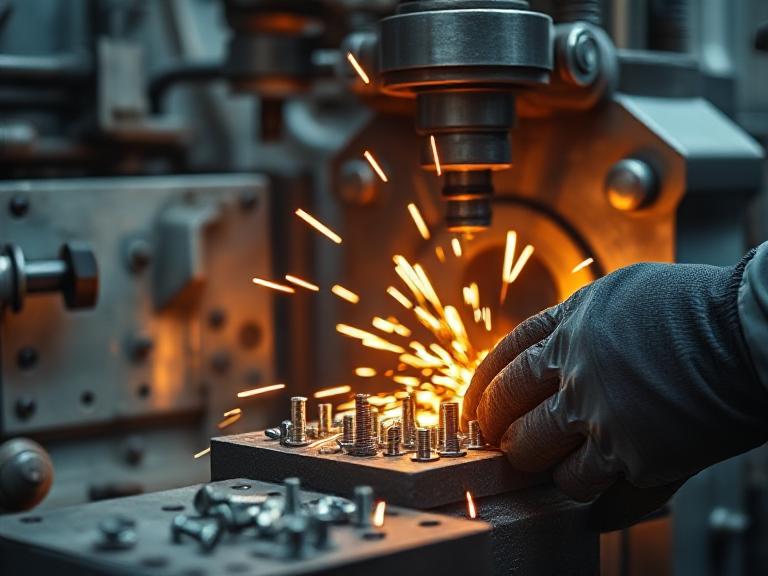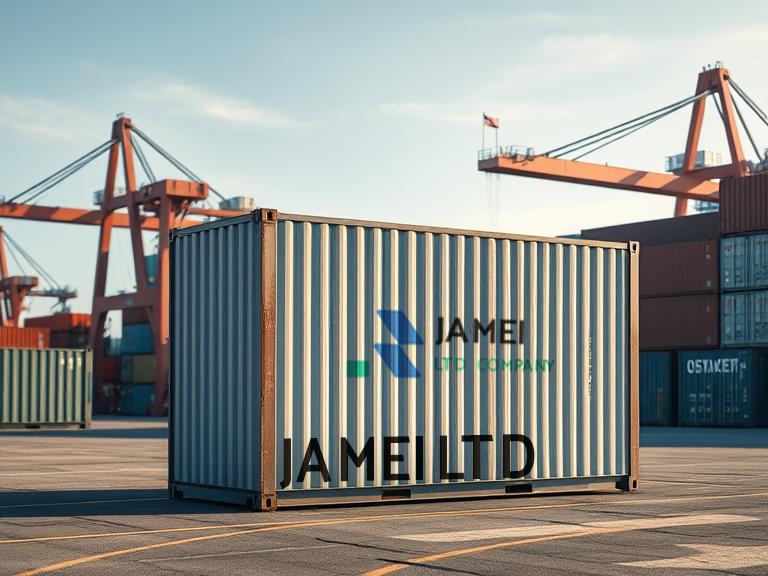Exporting such industrial materials requires a blend of material expertise, rigorous manufacturing control, and global logistic savvy. Ensuring the delivery of consistent, high-quality products to such demanding markets as automotive, aerospace, construction, and heavy machinery creates long-term relationships and highly profitable trade lanes.
This article examines what differentiates a top exporter of rivets and screws: from material choices to the manufacturing process, from quality assurance to certifications, and ways in which it is possible to maximize your margins when you export screw or export rivet to international buyers.
Why quality matters in fasteners Fasteners, such as rivets and screws, are small items that hold entire structures together. Failures result in costly recalls, downtime, or safety incidents. Buyers increasingly demand traceability, batch testing, and performance guarantees.
Positioning as a reliable supplier of a High Quality Product isn’t optional; it’s the baseline that unlocks contracts and higher price points. An exporter who can consistently meet and document specifications becomes a preferred partner and is able to command premium margins when they export screw or export rivet worldwide.
Rivet Materials
The performance of a rivet depends mainly on material selection. Commonly used rivet materials are:
Aluminum Alloys: The usual alloys are 2017, 2024, and 6061. lightweight and corrosion-resistant; used in aerospace and transportation.
Steel-mild and stainless: Of high strength, hence applicable in heavy-duty applications; enhanced corrosion resistance with the stainless grades 304 and 316 in harsh environments.
Copper and copper alloys combine good conductivity and corrosion resistance, and find application in electrical or marine contexts.
Titanium: excellent ratio between resistance and weight; anti-corrosive, used in aerospace or special industry applications.
Plastic and composite rivets are non-conductive, corrosion-resistant materials applied to electronic assemblies and lightweight constructions.
The correct choice of rivet material needs to balance strength, ductility, weight, corrosion resistance, and cost. Exporters offering material certificates and batch traceability often score well with procurement teams.

Screw Material Screw performance also depends on material and metallurgy. The most commonly used screw materials are:
Carbon steel: Economical and strong; often furnished with different heat treatments to obtain the required tensile strength.
Alloy Steels. They demonstrate higher strength and wear resistance, and are suitable in high-load applications or for those that involve high-stress conditions.
Stainless Steel: 302, 304, 316, 410, 420 Corrosion resistance varies by grade; 316 preferred for marine environments.
Brass and bronze: resistant to corrosion, good electric conductivity for decoration or electric appliances.
Hardened tool steels: for high-wear applications such as machinery and dies.
Specialty materials-including inconel, monel, and titanium-are used in extreme corrosive, temperature, and weight-sensitive applications.
Exporters that publish detailed material specification, hardness levels, and heat-treatment data make evaluation by purchasers easier, thus speeding up buying decisions.
Manufacturing process Delivering high-quality rivets and screws starts with repeatable manufacturing processes. The main stages include:
Raw Material Inspection: The incoming billet, wire, or bars are inspected for chemistry and mechanical properties. Certificates of Conformity (COC) and Mill Test Reports (MTR) are examined.
Cold heading and forming: Most screws and rivets are manufactured by a cold heading operation that shapes metal without heat. The result is a superior grain flow that gives improved mechanical properties.
Thread rolling and tapping: Rolling threads increase strength compared with cutting. Rolling also improves surface finish and fatigue resistance.
Heat treatment: Quenching and tempering for steels; solution annealing for stainless, to achieve the target hardness and toughness.
Surface finishing and coatings: Zinc plating, galvanizing, black oxides, cadmium (where permitted), phosphate coating, and special coatings like Dacromet or PTFE have beneficial corrosion resistance properties and improve assembly performance.
Secondary machining and finishing: thread rolling, slotting, knurling, countersinking, or close tolerance machining for specialty fasteners.
Inspection and testing: Dimensional checks, tensile tests, hardness tests, salt spray corrosion testing, and when called for, nondestructive testing (NDT), such as magnetic particle or dye penetrant.
High-volume and consistent quality depend upon process control, in-line monitoring, and statistical quality control. Exporters that have invested in automation and real-time SPC decrease variability and defect rates.
History of Industrial Equipment Understanding the evolution of industrial equipment helps explain how modern exporters achieve high precision and capacity. Manufacturing fasteners has moved from hand-forged rivets in the 19th century to today’s multi-station cold headers and high-speed thread rollers. Automation, CNC machining, and robotic handling have made mass production at tight tolerances possible.
Quality control tools such as calibrated CMM machines, automated optical inspection, and digital traceability systems have become commonplace in the best facilities. It is this history of continuous improvement that allows contemporary exporters to meet strict international standards and deliver consistent High Quality Product at scale.

Quality assurance and certifications Export markets often require documented evidence of quality. Key certifications and systems include:
ISO 9001: Quality management system-fundamental for reliable processes.
ISO 14001: Environmental management: this will appeal to customers who are increasingly conscious of sustainability.
IATF 16949: Automotive quality standard: required by many automotive OEMs and Tier suppliers.
AS9100: Quality management in aerospace-aerospace fasteners.
Compliance to RoHS and REACH: The restriction and registration requirements of certain markets.
Third-party material certification (MTR): ascertains material chemistry and mechanical properties.
EN and ASTM standards: Compliance with recognized fastener standards such as EN ISO 898-1, ASTM F568M, or particular DIN/ISO/UNI norms.
Maintaining these certifications and providing traceable documentation reduces the buyer’s risk and enables higher pricing.
Packaging, logistics and export documentation Correct packaging is necessary to prevent corrosion and damage during shipment. Usual packaging and logistics:
Protective packaging includes vacuum-sealed or desiccant-lined containers for coated parts and corrosion inhibitors for steel products.
Batch Labeling: Clear identification of lot number, MTR references, and dates of manufacture
Palletization: Stacking securely with anti-shift measures for shipment by container.
Compliance with international shipping regulations: Correct HS codes, export licenses, and material safety data where applicable.
Documentation required includes a commercial invoice, packing list, bill of lading, certificate of origin, export licenses, and inspection certificates.
Incoterms clarity: Clearly defining responsibility via EXW, FOB, CIF, and DDP avoids disputes and hidden costs.
An exporter who streamlines logistics and documentation reduces lead times and improves buyer satisfaction, therefore enhancing reputation and repeat business.
Markets and Segmentation Successful Export Rivet and Export Screw operations target specific sectors
where quality and traceability are valued higher than commodity pricing. Key sectors:
Automotive and auto components: Large volumes with exacting specifications and stringent audits of suppliers.
Aerospace/defense- ultra-high standards and long qualification cycles, but high margins.
Construction and infrastructure: Large volumes, high demand for corrosion-resistant systems.
Electronics and Appliances: Precision small screws, non-magnetic materials.
Oil, Gas and Marine: Corrosion resistant and high temperature fasteners.
By focusing on a niche, such as aerospace rivets or high-tensile screws to automotive specifications, an
exporter can develop technical expertise and command premium prices.

High-profit export and import: With high profit, it’s not at all about low-cost production. Strategies include:
Differentiation: We supply certified High Quality Product with full traceability, engineering support, and consistent on-time delivery.
Value-added services include pre-assembly, custom packaging, kitting, private labeling, and vendor-managed inventory arrangements to increase customer dependency and margins.
Market intelligence: targeting markets with supply shortages, favorable tariffs, or high demand for specialized fasteners.
Profitable export product
Long-term contracts: Securing multi-year agreements stabilizes revenue and enables better capacity planning.
Currency and financing strategies: Hedging currency exposure and offering competitive trade financing smooths cash flow and decreases risk for buyers.
Lean operations: Reducing waste, optimizing tooling, and improving yields lower unit costs without sacrificing quality.
We create wealth when exporters move beyond price competition to provide reliability, documentation, and services that customers value-this is the core of achieving export and import with high profit.
Case example: From raw wire to an Export Screw A practical chain highlights the integrated value:
- Supply high-grade steel wire with associated MTRs.
- Cold-head the wire into blanks, roll threads and heat-treat to specified hardness.
- Apply anti-corrosion coating and conduct salt spray tests.
- Pack in desiccant-sealed boxes with batch labels and MTRs.
- Provide complete export documentation: Certificate of Origin, commercial invoice, and packing list, and ship on FOB terms to a Tier 1 customer.
- Provide after-delivery support and monthly quality reports for contract renewal.
- Every step that adds traceability or reduces buyer risk justifies a higher price point for products using Export Screw.
Building trust with buyers Trust is earned by predictable delivery, quick responsiveness to non-conformances, and transparency. Key practices:
Provide sample qualification kits and first-article inspection reports.
Provide an easily accessible document portal for certificates and test reports. Respond to claims with root-cause analysis and corrective actions.
Invest in on-site audits and third-party inspections where necessary. These behaviors turn single orders into long-term supply relationships with recurring revenues.
Conclusion The ability to export rivets and screws at the highest level is a composite capability:
careful material selection (Rivet materials, Screw material), precise manufacturing (Manufacturing process), historical improvements of industrial equipment (History of industrial equipment), and stringently controlled quality and logistics systems.
In this way, suppliers investing in certifications, traceability, and value-added services set themselves apart from commodity sellers and could thus allow for more lucrative international trade.
Focusing on delivering documented performance, consistent supply, and tailored services is the most rapid route toward being the preferred partner for buyers who value reliability and who will pay for a High Quality Product.
In fact, using such an approach opens paths of more stable customers, higher margins, and a stronger global footprint on export and import markets for Export Rivet and Export Screw suppliers.